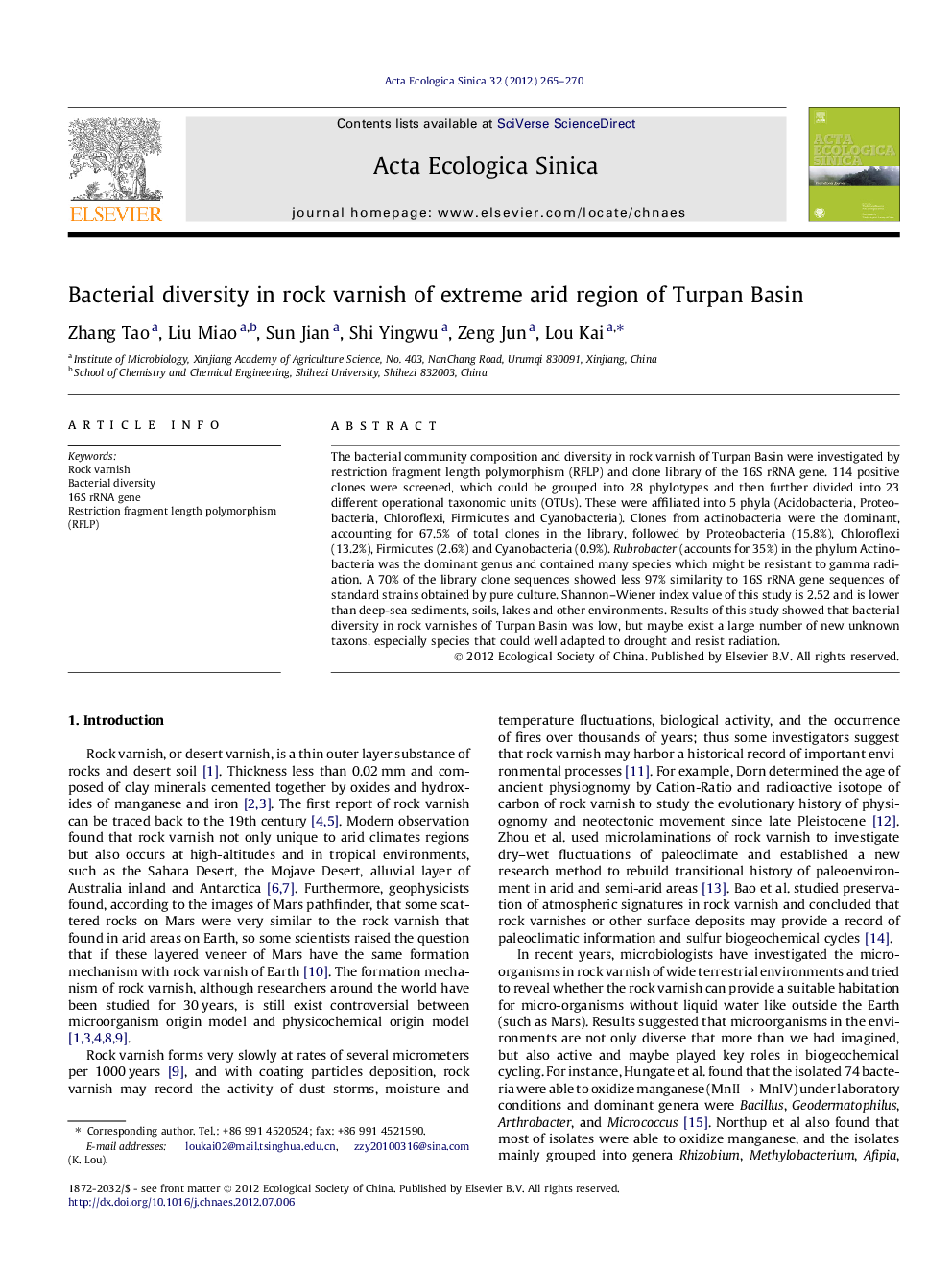| Article ID | Journal | Published Year | Pages | File Type |
|---|---|---|---|---|
| 4380050 | Acta Ecologica Sinica | 2012 | 6 Pages |
Abstract
The bacterial community composition and diversity in rock varnish of Turpan Basin were investigated by restriction fragment length polymorphism (RFLP) and clone library of the 16S rRNA gene. 114 positive clones were screened, which could be grouped into 28 phylotypes and then further divided into 23 different operational taxonomic units (OTUs). These were affiliated into 5 phyla (Acidobacteria, Proteobacteria, Chloroflexi, Firmicutes and Cyanobacteria). Clones from actinobacteria were the dominant, accounting for 67.5% of total clones in the library, followed by Proteobacteria (15.8%), Chloroflexi (13.2%), Firmicutes (2.6%) and Cyanobacteria (0.9%). Rubrobacter (accounts for 35%) in the phylum Actinobacteria was the dominant genus and contained many species which might be resistant to gamma radiation. A 70% of the library clone sequences showed less 97% similarity to 16S rRNA gene sequences of standard strains obtained by pure culture. Shannon-Wiener index value of this study is 2.52 and is lower than deep-sea sediments, soils, lakes and other environments. Results of this study showed that bacterial diversity in rock varnishes of Turpan Basin was low, but maybe exist a large number of new unknown taxons, especially species that could well adapted to drought and resist radiation.
Keywords
Related Topics
Life Sciences
Agricultural and Biological Sciences
Ecology, Evolution, Behavior and Systematics
Authors
Zhang Tao, Liu Miao, Sun Jian, Shi Yingwu, Zeng Jun, Lou Kai,
